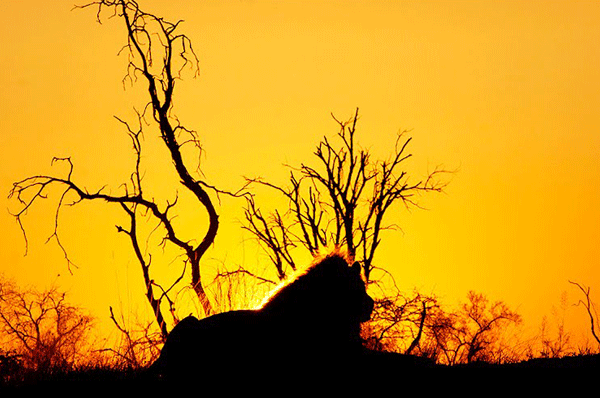There is something uniquely intriguing about lions that causes such excitement amongst safari-goers, bush-lovers, wildlife researchers and guiding professionals. Lions are often the primary reason for bringing visitors into national parks and reserves – to witness the iconic, maned Big Cat confidently boring his enchanting stare into onlookers as they snap away reels and reels of film in an attempt to capture the tooth-revealing yawn. The electric energy and African pride that builds around lion sightings and the news of notorious lions, spreads like wildfire. Admirers so strongly feel the need to describe their experiences with these incredible kings; photographers lie in wait of the perfect portrait; game rangers save their lion tales for campfire story-telling; ancient bushmen paintings depict the legends these animals have spun; and African warriors have, for centuries, strived to achieve the status of a lion.
Some people are lucky enough to have gained exceptional access into the lives of lions, such as National Geographic’s Explorers-in-Residence, Dereck and Berverly Joubert. Their dedication to the research and understanding of these inimitable animals has been broadcasted for the world to see. As staggeringly beautiful as their footage is, the results of their privileged work have brought to light a terrifying reality about the existence of Africa’s lions and the morbid future they face as a species should the public not turn their adulation into activism.
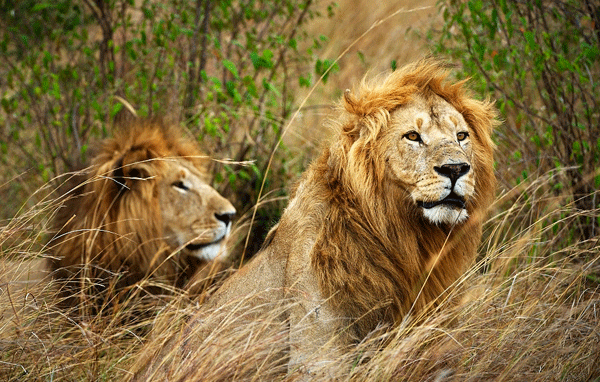
Here are the facts: in the last 60 years that have passed, the population of lions in Africa has been stunted by a devastating 90-95%, bringing the number down from a healthy 450 000 to merely 20 000. Who to blame, you may ask. It is hardly surprising that the sole reason for the destruction of the lives of lions comes down to human conflict. Out of fear, anger and, most disturbingly, greed; people are about to wipe out King of the Jungle.
There are many rural communities in Africa living in borderless settlements that are frequently intruded upon by wild animals, causing havoc and evoking fear. Tragically, the defensive response is to kill the threat, to protect their livestock from predators and to sustain their livelihoods. The retaliatory killing of lions has reached disparaging numbers, as herders use snares, poison and ammunition to target the cat culprits who kill their cattle. In the Masai Mara, and more recently in certain areas of Tanzania, the construction of ‘bomas’ or fences around cattle kraals and villages has had an astoundingly positive effect. Funded by the Jouberts’ Big Cat Initiative (BCI), the retaliatory lion killing has been dramatically reduced due to the simple, yet significant building of bomas. Other preventative efforts that have been granted by the BCI include the application of ‘livestock insurance’, whereby farmers are paid out the monetary value of the livestock that has been lost to lions; thereby settling the loss and saving the lion.
More than 2000 years ago, lions numbered in the millions as they prowled the boundless continent, furthering their unmistakable tracks into Syria, Iraq, Pakistan, Iran, India and Israel. As the human population has grown and our occupation on this one and only Earth increases, we have consistently shrunk the amount of free-roaming space relied upon by the lions. The savannah used to exist as an incomprehensibly vast tract of land, assumed to be impossible to occupy entirely. The truth is that only 25% of the original savannah remains, due to progressive human encroachment in the form of massive land-use conversion and the development of settlements. As the land that was previously ruled by Africa’s largest carnivore is increasingly occupied by people, the smaller lion territories will become and the more human-lion conflict will ensue. The assembly of a sturdy road to extinction, and the ultimate death of our lions can once again, in this instance, be attributed to humans.
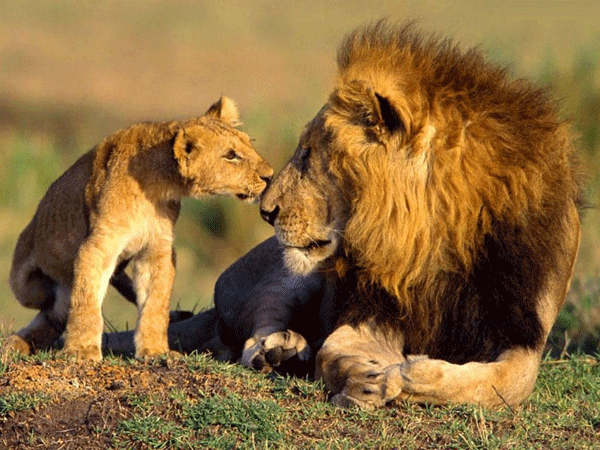
Unfortunately, the human impact on the heartrending decline of the lion does not end with a fight for living space. In fact, the ruthless murder of lions is dominated by an industry that is threatening the very near future of the Big Five. Poaching has consumed news headlines around the world, leading with the horrific number of rhino poaching incidents in southern Africa in the last year. A morose and not-so-publicised fact is that South Africa has entered the trade of lion products. Lion skins and bones, in particular, are proving to be a hot commodity after 1000 lion skeletons were released onto the market. These bones are being bought off poachers and used as a component in ‘tiger wine’. Used in China for centuries, it is falsely believed to ease and heal ailments such as rheumatism, sterility and ulcers and cancer. This age-old concoction originally used tiger bones, but since that remarkable, striped feline is now dangerously at risk of becoming extinct (more quickly than lions, that is), manufacturers of ‘tiger wine’ are manically stocking up on the identical ingredient – lion bones.
Of course, just as the medicinal uses of rhino horn are fictitious, lion bones hold absolutely no more medicinal value than human bones do. The problem is that the seed has been planted, the rumour spread and the mind brainwashed. This mythical product is now the star of a lucrative industry that cannot be resisted by the greed of mankind.
The bones of our incredible cats are easily attained in South Africa due to the entirely legal, yet appalling industry of lion trophy hunting. While Botswana and Zambia have banned lion hunting altogether, and Mozambique is expected to soon follow suit, it is torturous to acknowledge the big game hunting statistics of Southern Africa. The Convention in Trade in Endangered Species has confirmed that there are 5000 lions being bred in captivity by 200 breeders in South Africa and that this fully operational trade results in one lion being killed every day in a hunt. Lions do no not breed at this rate, which concludes that lions are a dying species due to hunting. This is firm proof that this is the biggest problem facing the survival of lions today. The reasons people pay huge sums of money to “hunt” lion are no longer based on any moral code. It can most certainly be said that the adventurous, dangerous spirit of a hunt, as it would have been in the times of President Roosevelt and Frederick Selous, is long forgotten.
In the business of hunting in South Africa, lions are born and bred in captivity until they are matured enough and possess a mane worthy of a trophy. The individuals are then booked by a paying customer and are released with a 96 hour head start, into a cordoned-off area. For the first time in their entirely stunted lives, these animal kingdom rulers are released into a wilderness they should walk with pride. Instead, a period of curious discovery unfolds, and after a few days without their hand-fed steaks, hunger takes over and a nervous and confused animal spends dark hours in isolation, until armed, paying customers take aim and end that lion’s sad existence. Many a time, an inexperienced shot will painfully and angrily injure the animal, leading to an unnecessarily bloody end. It is difficult to imagine that any one of these defenceless victims could be leading an abounding pride of young cubs and loyal females across kilometres of defended territory, to be dethroned only by a stronger, more competent male.
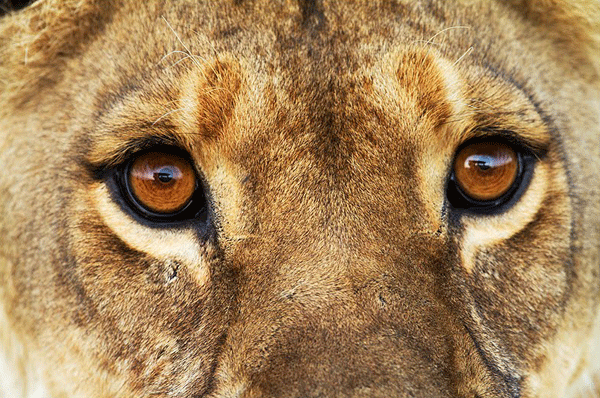
The belief that the revenue brought into the country through hunting actually funds the conservation of the Big Five is a maddening mistake. This has been measured and the outcome is that conservation efforts and local communities benefit far more from ecotourism than they do from hunting. The safari industry is a lucrative one. The attractions of Africa are unrivalled anywhere else in the world and the innovation of ecotourism ensures that what visitors pay to see in this lion-led kingdom is injected directly into the protection and maintenance of that very environment.
In Kenya, young warriors have, over the last 500 years followed the traditional practice of a lion hunt in order to prove their worthiness for courtship. Samburus and Maasais lead earthly lives in Kenya – their movement following the patterns of rainfall as they guide their precious livestock and their families to areas of greener pastures and fresh water. Having resisted the “western” development of society, these tribes maintain a way of life unaccustomed to structural education and modernity; however, as of 2012, the Maasai Olympics have replaced the 500 year old traditional lion-hunt competition for courtship. With an emphatic understanding of the need to save the great lion, young Maasai men now compete in sprints, endurance races, spear-throwing and high-jumps in order to be awarded their credibility as a husband. A change in ancient tradition from within the heart of Africa means that these warriors now compete for a trophy of a very different kind, receiving recognition, rewards and respect, whilst preserving the precious cargo this continent holds.
Wild Africa’s steadfast representatives, Dereck and Beverly Joubert are the founders of the Big Cat Initiative (BCI), which is in place for the very purpose of protecting lions and their threatened feline relatives. This superb organisation has imprinted heavily on the hearts and minds of the public and proactive entrepreneurs. Since its inception, the BCI has funded over 40 conservation projects in over 13 countries; saving, changing, teaching and building in Africa. Successful initiatives have ignited the desire to grow and to expand to achieve their goals of reversing this crisis by the year 2015. Cause an Uproar is National Geographic’s most recent shout-out to BCI; offering various means of taking action against the plight of lions. Any donations received through Cause an Uproar are injected into BCI and its grantees; therefore, directly contributing to this enormously important movement.
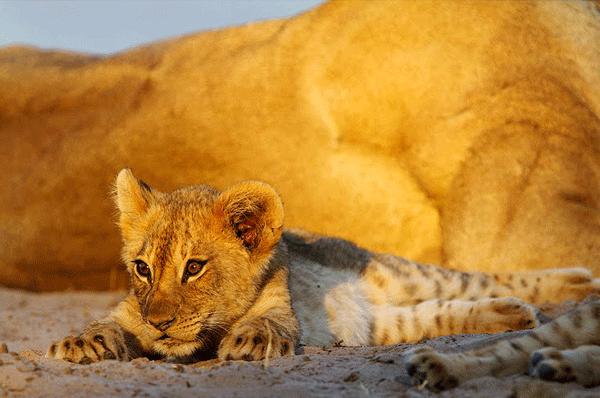
It is now a scramble to stop the unravelling, to save the largest carnivore in Africa and to give this Big Cat a chance of survival by stemming the ill-advised demand for its skin, its bones, and its head. Can you imagine a world without lions? The weight this majestic creature carries ecologically, politically and culturally, is vast. It is impossible to imagine all the African proverbs, symbols, namesakes, and stories that profess the glory of the lion. Internationally, it is a figure of bravery, royalty, strength and tenderness. The lion appears as the stellar constellation of Leo and its zodiac designation; as the body of the sphinx – guardian of the Pharaoh in ancient Egypt; as a momentous character in scripture; as the flagship representation of nations; as Simba, the Lion King; as British sports team heraldry; as Aslan, the wizened leader in the children’s stories of Narnia; and as the shared face of the South African 50 Rand bank note – a position shared with Nelson Mandela.
The critical ecological role played by lions in the structure of the ecosystem cannot be replaced and, upon omission, will wreak havoc on its natural course. Lesser carnivores will explode in numbers, inflicting a damaging imbalance and altering the image of the African kingdom forever. Economically, lions are vital to the health of many African nations, which rely, sometimes entirely, on the tourism trade. Tourism in southern and East Africa is a celebration of some of the wildest places remaining on Earth. The national parks, game reserves and private concessions are created to protect and sustain the world we, as humans, are privileged enough to observe. For some, safaris are life-changing; a fact that can be attributed to the magnificence of the lion and the evolving, self-dependent ecosystem which it so powerfully leads.
At Sun Safaris, we recognise it as our responsibility to do what we can to prevent the extinction of the lion. There is no luxury of time when it comes to this cause because the largely-unnoticed plummet in populations over the last 60 years has led us to this desperate point. For this reason, we pledge to do our part in donating to the Big Cat Initiative (BCI) through Cause an Uproar: As of 1 June 2013, Sun Safaris will donate US$ 20 for every safari booked with us to the Cause an Uproar initiative. That means that just by booking the African trip you’ve always wanted, you are directly contributing to the revival of the lion and the saviour of this unequalled species. We will encourage our clients to match that US$ 20, 00, or raise it, should they so wish. This is a plea and a recommendation to you; to take part in something that will undoubtedly change the face of the future. Without taking the action required of us, the sound of a safari will never again be the same, and the legend of the pride land will become just that – a legend – told of an extinct African King.
Read how Desert Lion Conservation is saving the Lions of Namibia’s Skeleton Coat
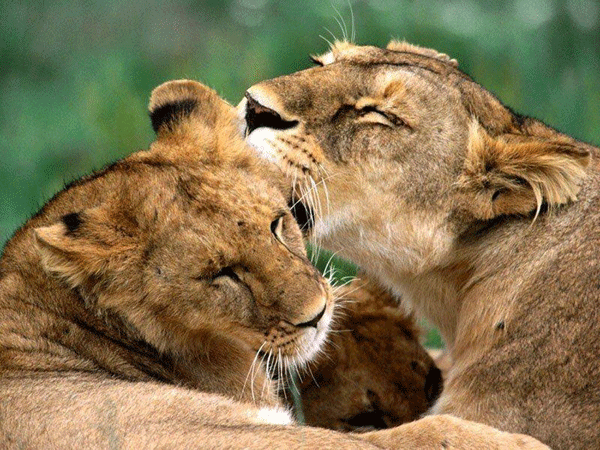

Chloe Cooper

